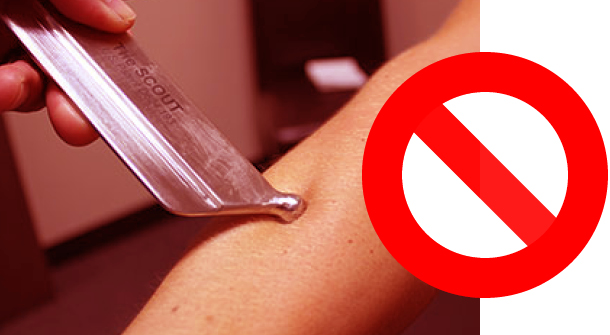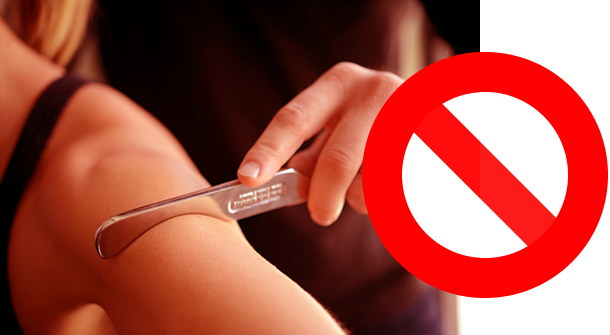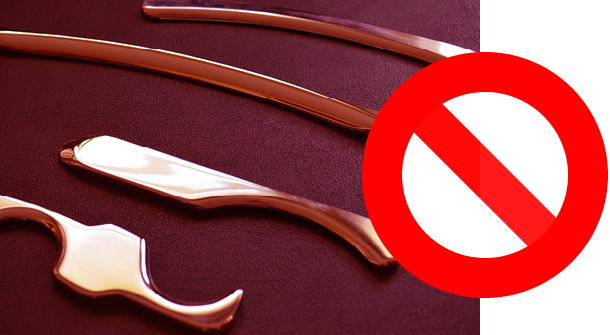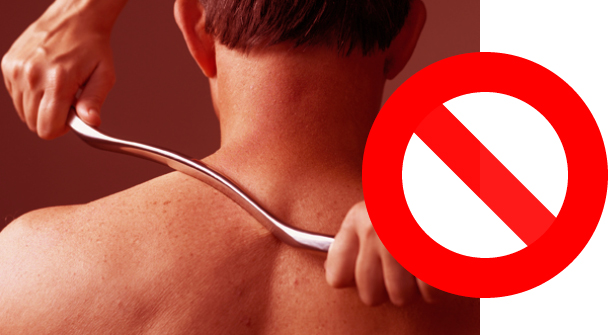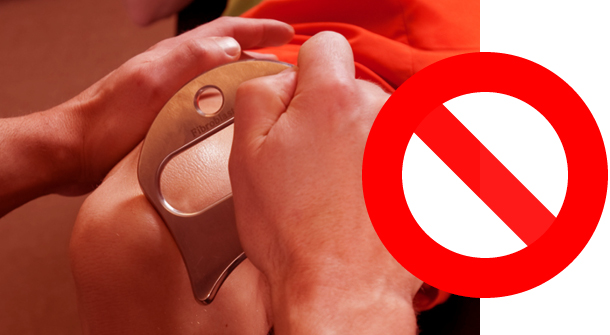If you have had limited results with other instrument treatments in the past,
I urge you to give our office a call. Here's why...
soft tissue treatment with an instrument
isn't all the same.
Soft tissue treatment has been performed with different types of instruments for over a hundred years. Any soft tissue treatment using a tool or instument is put in the category of Instrument Assisted Soft Tissue Mobilization (IASTM).
There are literally hundreds of different (IASTM) tools for sale. They range from five dollars to a few thousand dollars.
The Problem:
The problem with all of the IASTM tools is that most of the tools can be purchased online with no training. Some of the tools, like Graston, require training, but that training only shows you how to use the Graston tools on each structure. There is no education on: 1. Diagnosis, 2. What happens to the tissue as you use the tool, or 3. When the tool is appropriate for treatment.
As a result, the provider ends up just rubbing the tool where it hurts, and hoping the patient’s problem gets better. This is not clinical excellence.
So how is Instrument Adhesion Release (IAR) different?
Instrument Adhesion Release is used with the Integrative Diagnosis system. I use a complete history, physical and biomechanical examination, palpation and response to treatment to guide the diagnostic and treatment process. I do not simply rub where it hurts.
#1) The most Important DISTINCTION.
I make the diagnosis of adhesion prior to delivering treatment. This is a huge point because sometimes the patient’s problem is not a soft tissue problem.
#2) The Dangerous Difference.
Instrument Adhesion Release providers are taught is what structures can be effectively and safely treated with the IAR instrument. Many muscles, tendons, and ligaments are best treated with an instrument but some are better treated with the hands and some actually should never be treated with an instrument. IASTM providers will try to treat the psoas muscle or subscapularis muscle with an instrument. This is dangerous and they are fooling themselves into thinking they are performing effective treatment.
#3) Yes, the Shape matters.
Another factor that makes Instrument Adhesion Release superior to all other IASTM is:
the design of the tool. The shape plays a key role in delivering effective treatment. Many other tools try to match the curves of the instrument to the curves of the body. This is foolish because maximum surface contact is made with a flat shape when the tissue is compressed.
Even David Graston, the creator of the curved shaped Graston tools, realized this when he came out with the flat shaped Sound Assisted Soft Tissue Mobilization (SASTM) tools after leaving the Graston company. The Instrument Adhesion Release tool is flat to maximize the effective surface contact.
The other part of the design that is important is the edge of the instrument. It cannot be so thin that it cuts or scratches with use, or so thick that is doesn’t allow for necessary treatment depth. The Instrument Adhesion Release tool’s edge provides comfort while allowing for effective treatment.
Instrument Adhesion Release (iAR) is not the competition against these other tools — it is the evolution of them.
If you have had limited results with other instrument treatments in the past, I urge you to give our office a call.
Dr. Andrew Wengert is trained in the most advanced conservative treatments for correcting problems in the muscles and joints, and offers the clinical excellence you need to recover.


